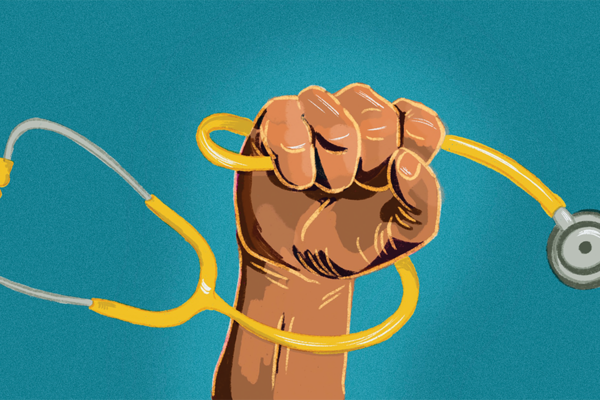Families who were eligible for the child tax credit (CTC) experienced improved nutrition, decreased reliance on credit cards and other high-risk financial services, and made long-term educational investments for both parents and children, finds a new report from Washington University in St. Louis.
Researchers from the university’s Social Policy Institute (SPI) partnered with colleagues at the Global Economy and Development program at the Brookings Institution and Appalachian State University. They found that families used the CTC to cover routine expenses without reducing their employment.
“The expanded child tax credit payments offered by the federal government from July to December of 2021 — which gave most families $250 to $300 a month for every child in their household — represented one of the most substantial family support programs ever implemented in the U.S.,” said Stephen Roll, research assistant professor at the Brown School and associate director of research at SPI.

“Though there has been a good deal of research on the potential effects of these payments on family well-being, our study is the first to track the same CTC recipients over time and compare how the outcomes of CTC recipients differ from those of a comparison group of families not eligible for the CTC,” said Roll, an author of the new report.
The CTC survey was administered in two waves: July 8 and July 13, 2021, immediately before the first child tax credit payments were delivered; and between Dec. 27, 2021, and Jan. 14, 2022, soon after the final payments were deposited.
The most common reported uses for the CTC were:
- routine expenses such as housing, food and utilities (69.6%)
- clothing or other essential items for children (58%)
- purchasing more food for the family (55.7%)
- saving for emergencies (49.4%)
- paying off debt (41.8%)
The authors report that CTC-eligible households were significantly more likely to reduce reliance on high-cost and risky financial services such as payday loans and pawnshops and they reduced their rates of selling blood plasma, as compared with families ineligible for the credit.
This reduction was especially prevalent among Black, Hispanic and other minority families, along with low- and moderate-income families. These results indicate the CTC may help reduce both racial financial inequality and a widening income gap in the United States.
“Overall, we found that families who received the CTC used their payments to cover essential expenses like food and bills, while also making investments in their children like paying for more or better child care, tutoring and extracurricular activities,” Roll said. “We also found that the CTC was associated with improvements in family food security, decreased reliance on high-cost financial services like payday loans and improvements in emergency savings. At the same time, we found no evidence that the CTC payments discouraged parents from working.
“Importantly, we also found that many of these improvements were especially strong from racial and ethnic minority families, as well as low- and middle-income families, which suggests that the payments can serve as an important tool for addressing issues related to many of the economic disparities these families face in the U.S.,” he said.
The research, along with other research on the child tax credit, showed how important it has been in helping families meet their short- and long-term needs and in helping dramatically reduce the child poverty rate in the U.S., Roll said.
“If the expanded CTC is not renewed in the future, we would expect most of these benefits to disappear,” he said. “Given that child poverty has huge costs to society in terms of things like increased health-care expenses and reduced lifetime earnings, renewing the CTC appears to be an effective and straightforward way for policymakers to improve Americans’ long-term economic mobility.”



